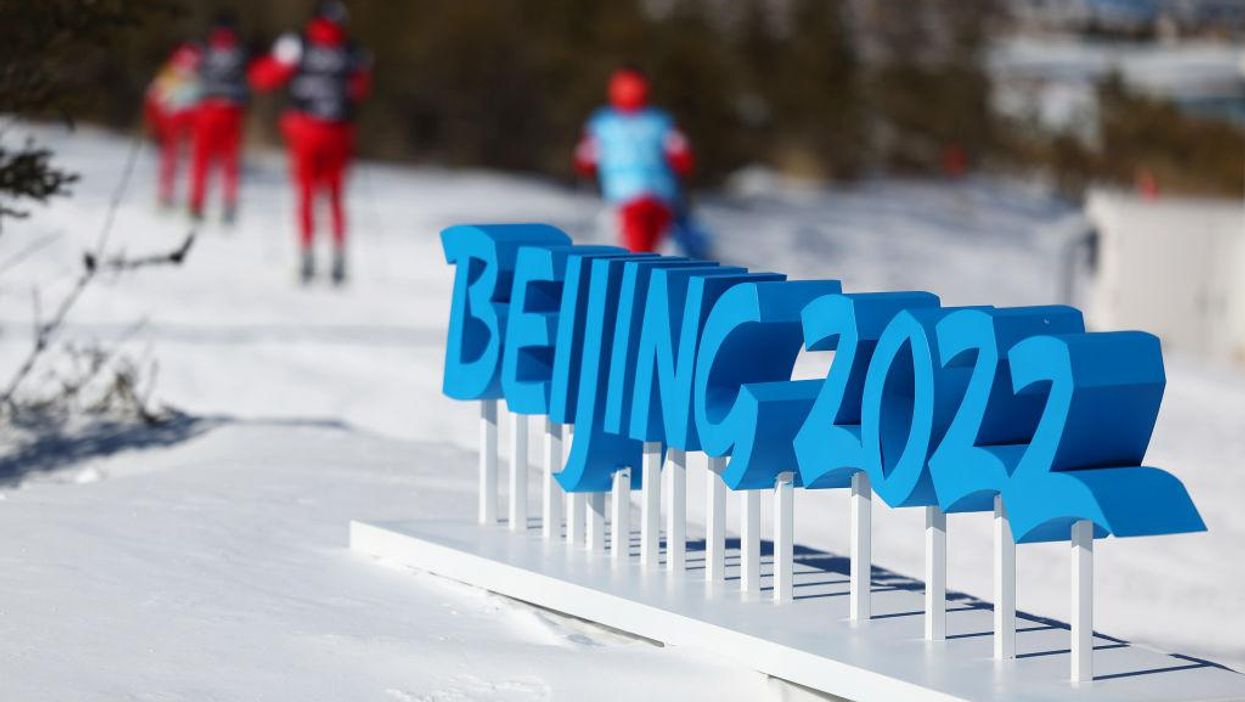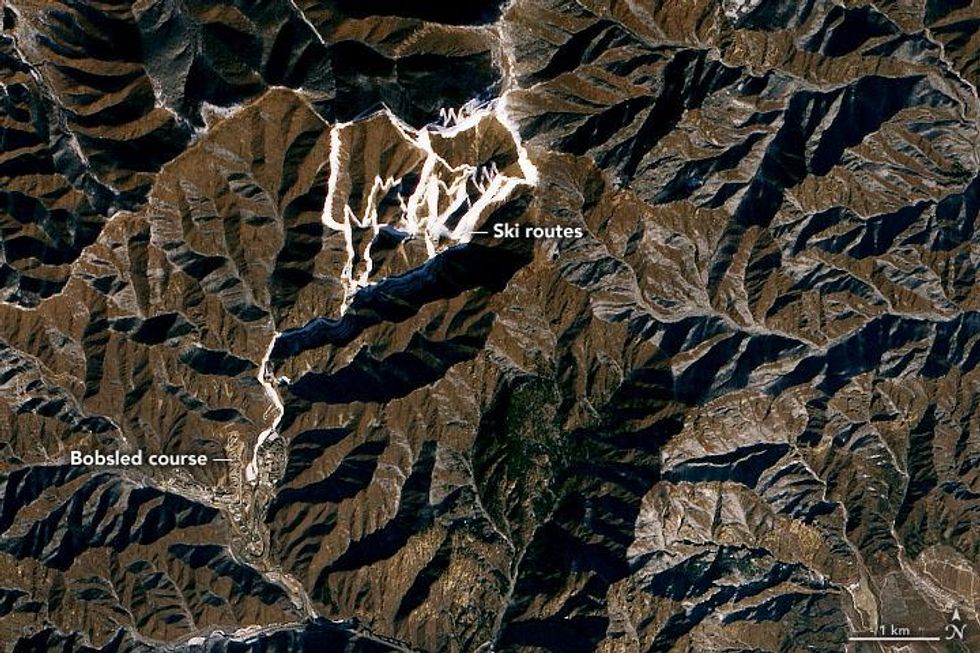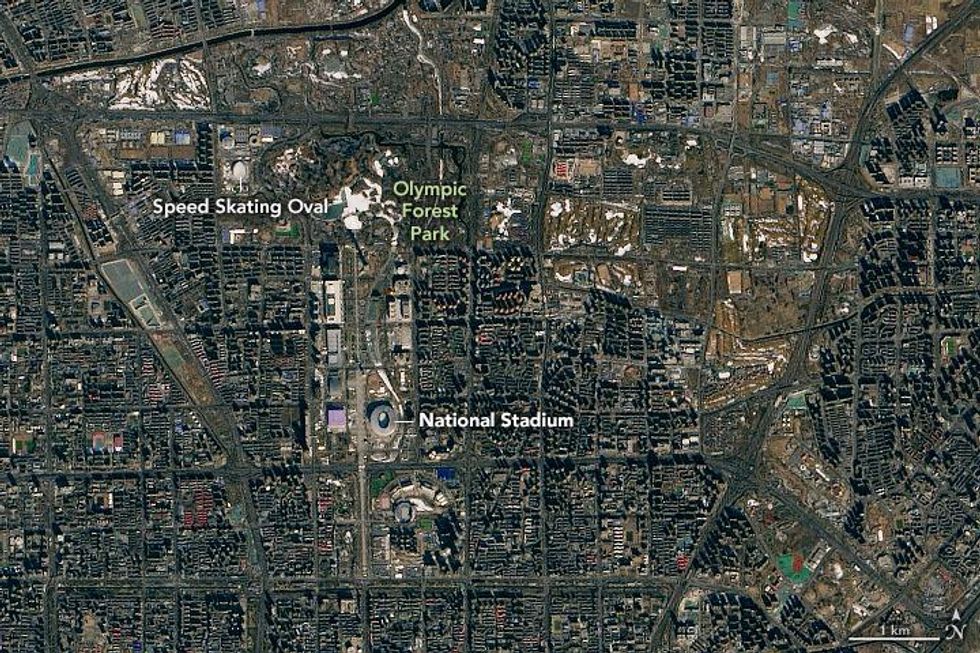
Al Bello/Getty Images

Fascinating satellite images from high above Beijing, China, and its surrounding areas are opening viewers' eyes to the not-so-wintery reality of the 2022 Winter Olympics.
The pair of photographs, released by NASA earlier this month, shows the staggering amount of fake snow used to make it possible for the Chinese capital to play host to the Games.
In one image of the Xiaohaituo Mountain in Yanqing, one can clearly see the white splash of artificial snow dumped on the venue terrain, separating it from the miles upon miles of surrounding brown mountains.
Yanqing, a suburb of Beijing located about 45 miles northwest of the city, was selected to play host to alpine skiing and sliding events such as bobsled, skeleton, and the luge due to its steep mountain faces. But while the terrain itself is suitable, the lack of snow has made hosting the events a sizable challenge.

According to Time, 100% of the snow used in the 2022 Winter Games will be artificial, and to transform the terrain, Olympic organizers had to make use of nearly 300 fan-powered snow guns and 83 lance-style snow guns from Italian firm TechnoAlpin.
"The output from those machines was easy to spot in satellite imagery of the area," remarked NASA. "On January 29, 2021, the Operational Land Imager (OLI) on Landsat 8 captured an image of the downhill trails covered with artificial snow. The water used to make the snow gets piped in from the nearby Foyukou and Baihepu reservoirs."
In another image, this one of downtown Beijing, a mostly arid cityscape can be seen but with certain plots of land covered in more fake snow.

While the city center was set to host mostly indoor events such as figure skating and hockey, Beijing did construct a "big air" stadium for aerial skiing and snowboarding on top of a former steel mill in nearby Shougang.
Other images shared of the "big air" stadium posted on social media have raised eyebrows and sparked criticism globally as commenters compared the Shougang backdrop to a "dystopian" industrial center and a "hellscape."
Honestly, what are we even doing here.pic.twitter.com/vtj7FarSVv— Michael Antonelli (@Michael Antonelli) 1644281640
In its report on the NASA images, Yahoo News noted that China claims the energy used to power its arsenal of snow machines will primarily be renewable and thus won't leave too much of a carbon footprint.
However, some are concerned about the massive amount of water needed to produce the snow, especially in a region where water scarcity has long been a concern.
China reportedly estimated that it will need something like 50 million gallons of water to produce artificial snow throughout the Games. Artificial snow is produced using air and water.
But Madeleine Orr, a sports ecologist at the University of Loughborough, warned, "If the region has enough warm days and snow melts, water use could really climb."
She went on to describe the Winter Games in Beijing as "a bit of a test case," saying, "Researchers haven’t examined the consequences of 100% fake snow melting rapidly."
While artificial snow has been used in large capacities to host the Games before, some athletes have also raised concerns about how an 100% artificial snow terrain could affect their performance.